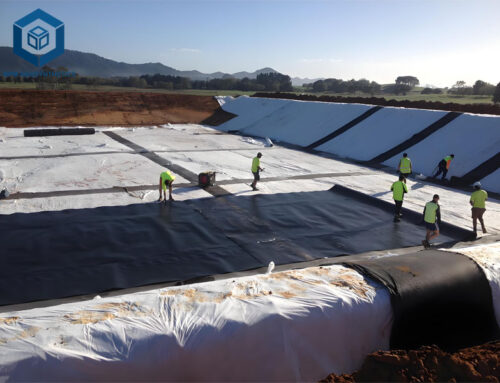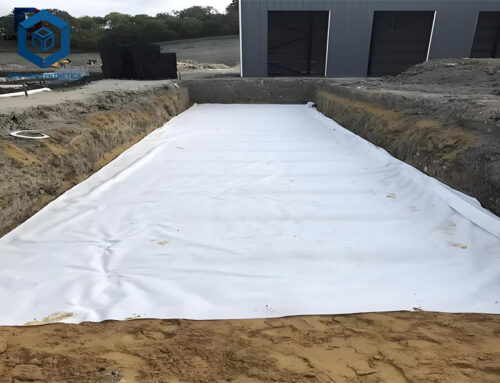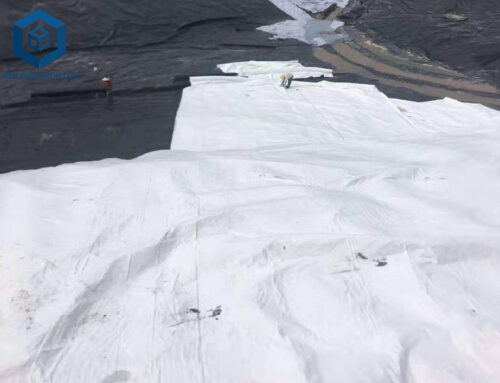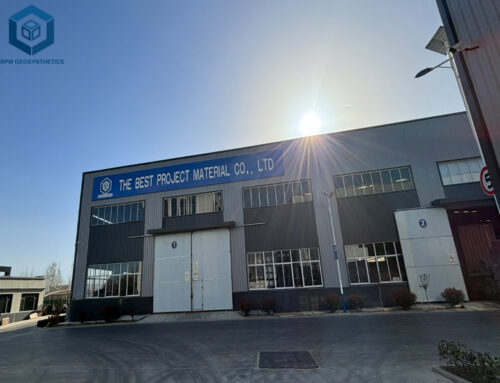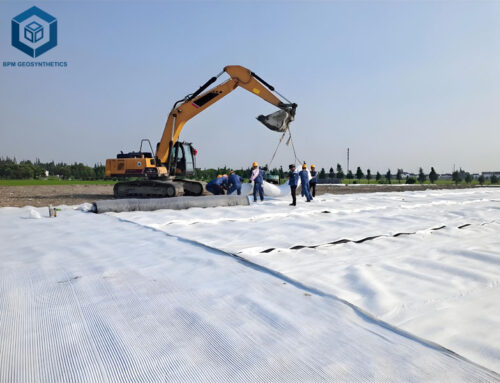Nonwoven geotextile landscape fabric as know as Nonwoven geotextile, is an innovative material designed to enhance the durability and aesthetics of outdoor spaces. By combining the principles of geotextile technology with landscape architecture, this fabric offers a sustainable solution for stabilizing soil, preventing erosion, and creating vibrant, functional landscapes. Let’s explore how nonwoven geotextile landscape fabric is transforming the way we design and maintain our green spaces.As a leading geotextile manufacturer, BPM has always been adhering to the attitude of satisfying customers and reassuring customers, and makes every product with heart.
1. What Is Nonwoven Geotextile Landscape Fabric?
Geotextile landscape fabric is typically made from synthetic materials such as polypropylene or polyester. It includes short fiber and long fiber, these fibers are formed into a nonwoven structure through processes like needle-punching or heat bonding. Chosen for their durability and resistance to environmental degradation, synthetic materials like polypropylene or polyester in nonwoven geotextile landscape fabric effectively permit water and nutrients to permeate while inhibiting weed growth. The nonwoven fabric’s structure imparts robustness and stability, rendering it a favored option across diverse landscaping projects.
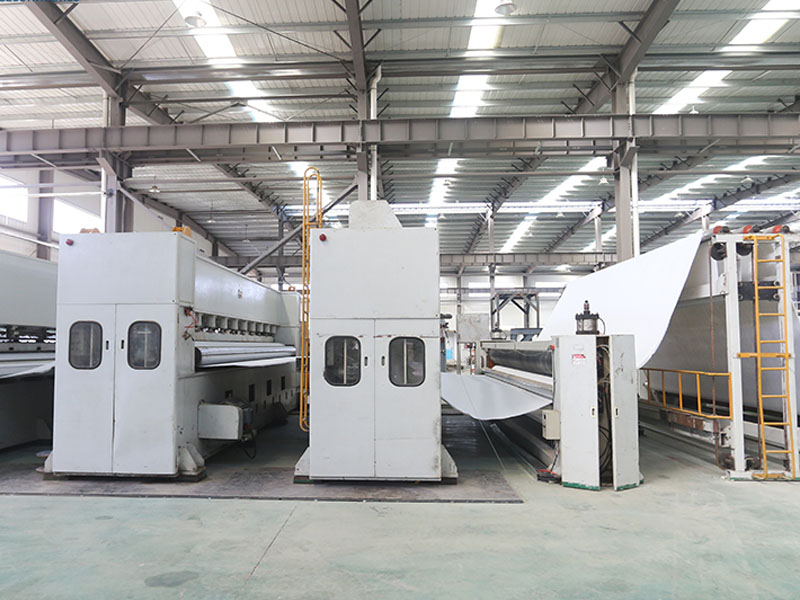
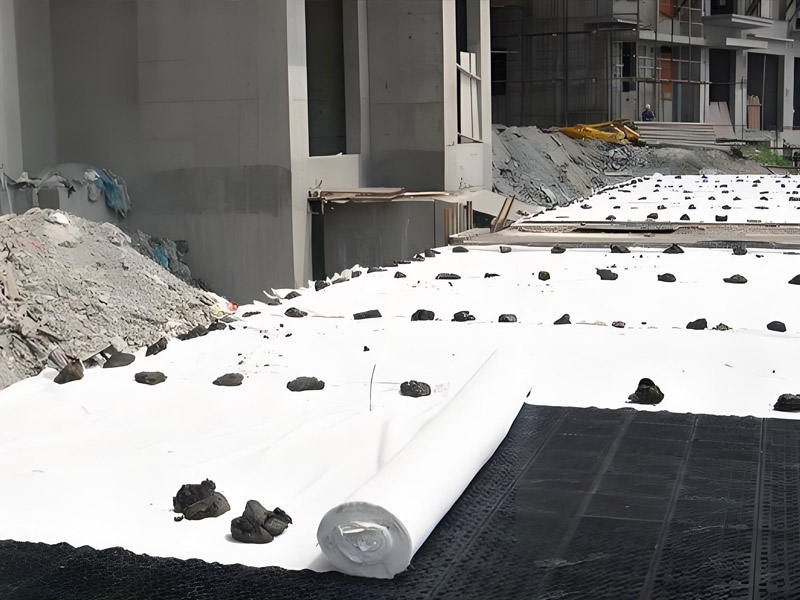
2. What Is Production Process Of Nonwoven Geotextile Landscape Fabric?
2.1 Preparation
The production process of nonwoven geotextile fabric begins with the careful selection of synthetic fibers like polypropylene or polyester prized for their durability and strength. These fibers undergo a meticulous process that starts with opening and blending, ensuring a uniform fiber mixture. Subsequently, carding aligns the fibers to a consistent orientation, preparing them for the web formation stage.
2.2 Process
During web formation, the aligned fibers are laid down using techniques like air-laying or carding, forming a web structure. This web is then subjected to bonding processes such as needle-punching, thermal bonding, or chemical bonding, crucial for imparting strength and stability to the fabric.
In some instances, the fabric may undergo calendering, passing through heated rollers to further enhance fiber bonding and improve overall properties. Post-calendering, the fabric may receive additional treatments like UV stabilizers or coatings tailored to specific functionalities.
2.3 Finished Product
Finally, the fabric is cut to the desired width and wound into rolls for ease of transportation and storage, completing the manufacturing process. Each step in this intricate process contributes to the creation of high-quality nonwoven landscape fabric, designed to meet the diverse requirements of landscaping and construction applications effectively.
3. What Are Characteristics Of Nonwoven Geotextile Landscape Fabric?
Nonwoven geotextile fabric is a versatile and durable material that has become increasingly popular in various outdoor and landscaping applications. It is characterized by its unique properties, which make it an ideal choice for a range of uses. Some of the key characteristics of geotextile landscape fabric include:
3.1 Durability
It is made to withstand harsh environmental conditions. It is resistant to UV rays, chemicals, and weather extremes, ensuring long-lasting performance even under heavy foot traffic or in exposed areas.
3.2 Permeability
The fabric allows water to pass through, which helps in the irrigation of plants and grass while preventing soil erosion. This also aids in managing stormwater runoff effectively.
3.3 Strength and Tear Resistance
Despite being permeable, the fabric is strong and resistant to tearing. It can bear significant mechanical stress without ripping or breaking, making it suitable for load-bearing applications such as driveways, paths, and patios.
3.4 Weed Control
Nonwoven geotextile fabric acts as a barrier against weed growth. It blocks the penetration of weeds while allowing air and water to reach the soil beneath.
3.5 Soil Stabilization
The fabric helps in stabilizing the soil by preventing erosion and sediment loss. It works well on slopes and embankments by holding the soil together, reducing the need for extensive maintenance.
3.6 Environmental Friendliness
Nonwoven geotextile fabric often uses recycled materials, such as polyester or polypropylene. By using these recycled fibers, the fabric helps to reduce waste in landfills. This practice makes it an eco-friendly choice for landscaping projects.
3.7 Flexibility and Versatility
The large rolls of fabric can be easily trimmed and formed to suit various landscape designs. Thanks to its flexibility, installing it around bends and irregular forms is simple.
3.8 Lightweight
Though durable, the nonwoven geotextile fabric is light, simplifying transport and setup. Laying it out doesn’t require heavy machinery.
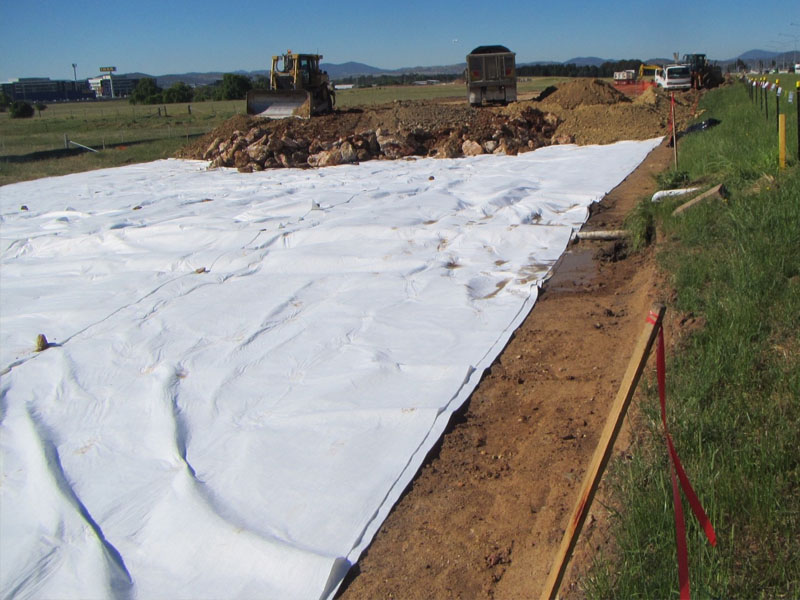
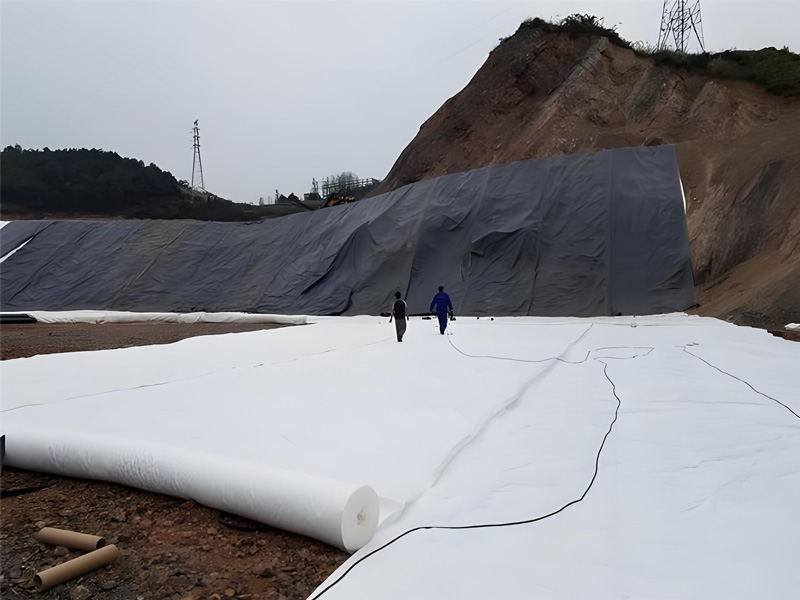
4. What Are Applications Of Nonwoven Geotextile Landscape Fabric?
Geotextile landscape fabric finds applications in a variety of landscaping projects due to its versatility and effectiveness. Here are some specific projects where nonwoven geotextile landscape fabric is commonly used:
4.1 Nonwoven geotextile landscape fabric – Gravel Driveways and Paths:
Placing nonwoven geotextile fabric under gravel helps stop the gravel from sinking into the soil. It also keeps drainage effective, preventing water buildup.
4.2 Nonwoven geotextile landscape fabric – Retaining Walls:
In retaining wall projects, nonwoven fabric separates the fill from the native soil. It also improves drainage and reduces soil erosion.
4.3 Nonwoven geotextile landscape fabric – Raised Garden Beds:
For raised garden beds, nonwoven fabric lines the base and sides. It holds soil while letting extra water drain.
4.4 Nonwoven geotextile landscape fabric – Artificial Turf Installation:
Under artificial turf, nonwoven fabric enhances drainage. It also stops weeds and ensures a stable base.
4.5 Nonwoven geotextile landscape fabric – French Drains:
In French drains, nonwoven fabric wraps the pipe. It keeps soil out and water flowing.
4.6 Rock Gardens:
In rock gardens, nonwoven fabric under rocks stops weeds. This preserves the landscape’s intended design.
4.7 Patio and Deck Construction:
Under patios and decks, nonwoven fabric separates the base from soil, avoiding erosion. In rock gardens, fabric under rocks stops weeds and preserves design.
4.8 Playground Surfaces:
In playgrounds, nonwoven fabric under mulch or rubber stabilizes the ground. It also prevents weed growth and enhances drainage.
5. Summary
Nonwoven landscape fabric is an essential material for various landscaping and engineering projects. Made from synthetic fibers that are bonded together in a random pattern, this fabric is designed to be durable and permeable. It plays crucial roles in erosion control, weed suppression, soil stabilization, and drainage improvement. The fabric is commonly used beneath gravel driveways, pathways, retaining walls, raised garden beds, artificial turf, French drains, rock gardens, patios, decks, and playgrounds. In these applications, it separates different materials, prevents soil migration, inhibits weed growth, and maintains the structural integrity of the landscape features. By providing a stable base and efficient water management, nonwoven geotextile landscape fabric helps to reduce maintenance and extend the lifespan of outdoor installations.
If you have any further questions, please feel free to contact us.

